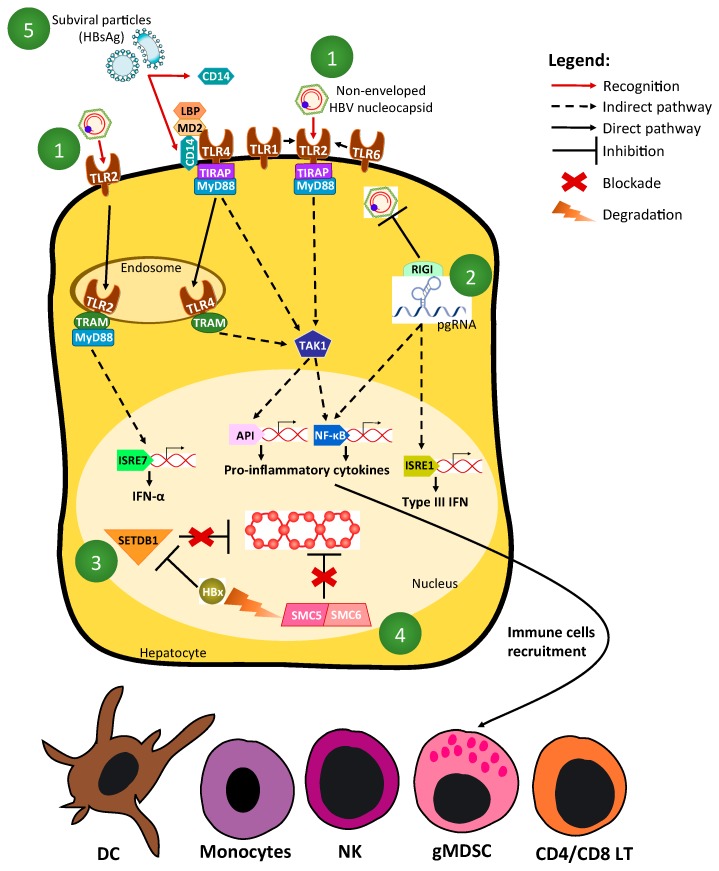Figure 1.
Hepatitis B virus (HBV) detection by innate immune sensors and regulation by host factors. (1) Non-enveloped HBV nucleocapsid composed of HBV core/capsid antigen (HBcAg) can be recognized by Toll-Like Receptor 2 (TLR2), triggering pro-inflammatory cytokine secretion in TLR2-positive liver cells via TRIF-Related Adaptor Molecule/ Myeloid Differentiation primary response gene 88 (TRAM/MyD88) or TIR domain-containing Adapter Protein (TIRAP)/MyD88 adaptation and Activator Protein 1 (AP1) and Nuclear Factor kappa-B (NFκB)-dependent pathways; (2) RIG-I could be a sensor of the “epsilon (ε) stem-loop” present in pregenomic RNA (pgRNA). This recognition leads to the production of type-III interferon (IFN) via both interferon regulatory transcription factor (IRF) 3 and NFκB-dependent pathways, as well as to the sequestration of pgRNA and a subsequent decrease of relaxed circular DNA (rcDNA) synthesis; (3) SETDB1, a histone-methyl-transferase, impairs covalently closed circular DNA (cccDNA) transcription, which can be reverted by HBx; (4) Structural Maintenance of Chromosome 5 and 6 (SMC5/6) complex inhibition of cccDNA transcription can be reverted by HBx, which induces SMC5/6 degradation in a DNA-Damage-Binding 1 (DDB1)-Cul4-E3-ubiquitin-ligase-dependent manner; (5) Subviral particles (i.e., HBV surface antigen or HBsAg) could interact with CD14, leading to their internalization and cell activation in TLR4 positive cells.

